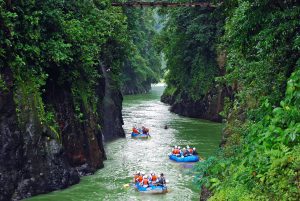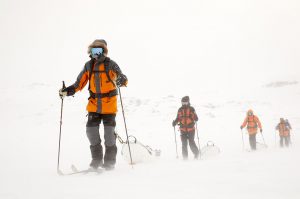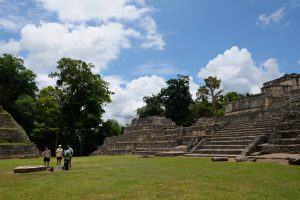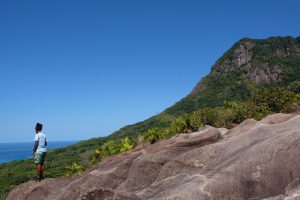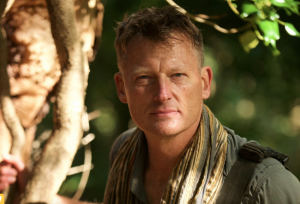
Image: Alamy
Amelia Duggan tackles the slopes of Val D’Isère, one very poetically critiqued lunge at a time
View online at natgeotraveller.co.uk
“The snow is perfect this morning; like a cappuccino!” Enrico shouts as he slices his way down the slope, lunging so deeply into his turns that he brushes the powder with one hand. My first attempt at telemark skiing clearly doesn’t look as artful. “You need to glide into the corners,” Enrico scolds as I judder to a halt in front of him. “You want to be like Mozart, not like Bach — smooth!”
My second attempt at a run is better: this time I manage to slide my skis apart in parallel (to a somewhat disconcerting chorus of “Open up! OPEN UP!”), lift the heel of my downhill leg and dip my knee a little as I go into a turn. I glide through the corner, straighten up then demi-lunge into another. I’m probably going at around 10mph but I feel like I could outmanoeuvre an avalanche.
By the fourth run, however, I’m exhausted, my muscles are burning and I can tell from Enrico’s colourful comparisons that it’s all going wrong. “You’re like Jackson Pollock right now!” he bellows, “You want to be Monet!” A few slopes later, we’ve moved from art metaphors to altogether more earthy comparisons. After being likened to a skittish goat as opposed to a soaring eagle, I suggest a break and glass of génépi at Val d’Isère’s La Folie Douce.
It’s here, during a light snow shower, as burlesque dancers twirl on stage, that I learn a bit more about telemarking. Invented in Telemark, Norway, in the late 1800s by farmer and skier-extraordinaire Sondre Norheim, Telemark combines Alpine and Nordic ski techniques, with toe-only bindings allowing lunges into fast, hard turns on any terrain, be it backcountry or in a resort. It comes with specialist equipment: only the duck-bill toe of the high, tight, multi-buckle boot is slotted onto the ski. The popularity of telemark skiing waned in the mid-20th century, until a revival saw it become the technique du jour among skiers in the 1970s and ’80s; a famous Canadian bumper sticker during these decades read, ‘Free the heel. Free the spirit.’
It can be hard to find good telemark instructors in Alpine ski resorts, let alone the kit to hire, but Oxygene in Val d’Isère offers a full range of equipment along with flamboyantly expressive instructors. It remains a niche sport with a reputation for attracting trendy speedsters thirsty for a new challenge, although it seems that an ambitious novice like myself can make some headway with the right teacher.
It’s undoubtedly a tough technique to get right: done well, it looks incredible. Done badly, it’s a dog’s dinner. But that’s part of its appeal: if it were easy, everyone would be Mozart on the slopes.
Published in the The Alps Winter 2016 guide, distributed with the November 2016 issue of National Geographic Traveller (UK)



